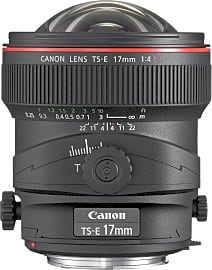The 7 Best Tilt Shift Lenses For Canon

This wiki has been updated 26 times since it was first published in August of 2018. Tilt-shift photography allows for great control over perspective and depth of field. Utilizing only mechanized movements built into the lens, users can adjust the focal plane to choose which area will be sharp, alter the placement of the subject within the frame, and even create perfect panoramas. These options for Canon camera bodies offer a range of features, focal lengths, and price points. When users buy our independently chosen editorial choices, we may earn commissions to help fund the Wiki.
Editor's Notes
November 23, 2019:
This list required something of a significant culling from its last iteration, primarily because a pair of Canon-branded models included on it were way too old to be viably considered, one of which had been clearly upgraded to the TS-E 90mm f/2.8L that has remained in the ranking. The other glaring issue left over from our last list was the collection of models by Bower, Rokinon, and Samyang. A close investigation of these should have led to the assumption that they might have been the same lens by three different companies, as their specs, appearance, and price points were all virtually identical. Further analysis would have revealed that the three companies are, in fact, one company operating under three different names depending on the territory in which they sell. In the US, the predominant brand name is Rokinon, so we cut out the Bower and Samyang models and left the Rokinon 24mm f/3.5 in place.
As to our rubrik for ordering a list of niche items like these, we wanted to work from a place where shooters might get the most use out of a lens, whether they were more interested in in-camera perspective control or more creative depth-of-field manipulation. These lenses tend to do their best work when pushed toward either the wide or telephoto end of the spectrum, with the 50mm point serving a fine purpose as an all-around shooter, but both requiring less distortion correction and offering less nuanced focal plane management than its wide and tight counterparts.












